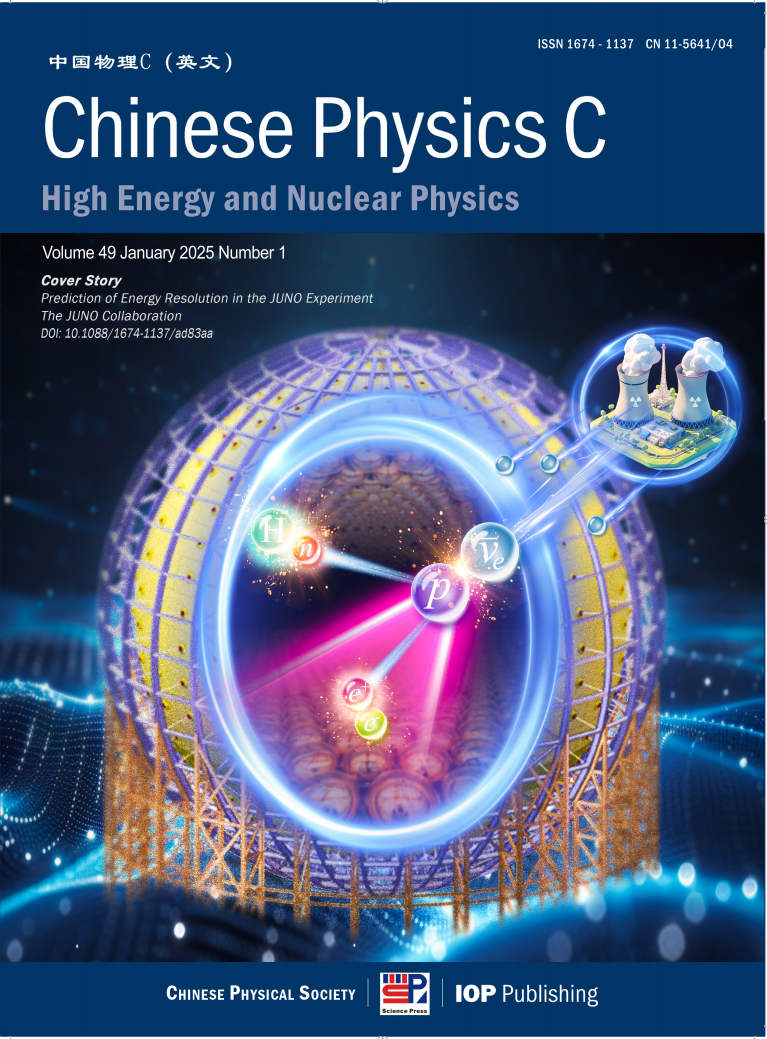Cover Story (Issue 1, 2025) Comments on Prediction of Energy Resolution inthe JUNO Experiment
Author: Jianming Bian (University of California, Irvine)
The JUNO experiment is a large-scale international neutrino collaboration with over 700 scientists from 70+ institutions across more than 15 countries. Its primary physics objectives include determining the neutrino mass ordering, precisely measuring neutrino oscillation parameters, and studying neutrinos from various sources, including nuclear reactors, supernovae, the Sun, the atmosphere, and the Earth. JUNO’s operations are set to commence in 2025.
The experiment’s central goal of resolving the neutrino mass ordering relies on analyzing the energy spectrum of reactor anti-electron neutrinos. This is achieved by studying the interference term between |Δm322|and |Δm312|terms, which is a secondary effect on top ofthe primary oscillation pattern of |Δm212|. Resolving this subtle effect requires achieving exceptional energy resolution and linearity. Since the proposal of the JUNO experiment, its capability to meet these stringent energy resolution requirements has been a topic of extensive discussion and debate within the neutrino physics community.
This paper presents a comprehensive study of JUNO’s energy resolution, incorporating the latest updates from the detector’s design and construction phase. It delvesinto a thorough understanding of the detector geometry, precise measurements of the liquid scintillator’s optical properties, detailed evaluations of PMT characteristics using quality control measurement data, and improved modeling of PMT photon detection efficiency. Additionally, the study lever ages light yield data from the Daya Bay experiment to enhance its predictions. The study systematically demonstrates the energy resolution that JUNO can achieve, acritical factor for its sensitivity to neutrino mass ordering. By providing this validation, the paper strengthens confidence within the neutrino physics community in JUNO’s ability to meet its ambitious scientific objectives, particularly in mass ordering measurements.
Additionally, this work establishes a robust framework for energy resolution and calibration studies in JUNO. The methodologies and findings not only serve as a valuable reference for future experimental data analysis but also provide essential guidance for energy resolution studies within the JUNO experiment. Moreover, the detailed discussion of energy response in liquid scintillator detectors stands out as a model study that can inform and inspire similar research in other experiments.
Finally, the updates presented in this paper have been fully implemented in the JUNO detector simulation, including detailed models of PMT responses and readout electronics. This ensures that the JUNO experiment can directly benefit from the findings of this paper from the very start of its operation.
In summary, this paper lays a solid foundation for JUNO’s ability to resolve the neutrino mass hierarchy using its novel, highly energy-resolution-dependent methodology. It represents a significant milestone in advancing the scientific readiness of the experiment. These results come as great news for JUNO as the experiment approaches its start.
References
[1] Angel Abusleme et al. (The JUNO Collaboration), Chin. Phys. C 49, 013003 (2025)














